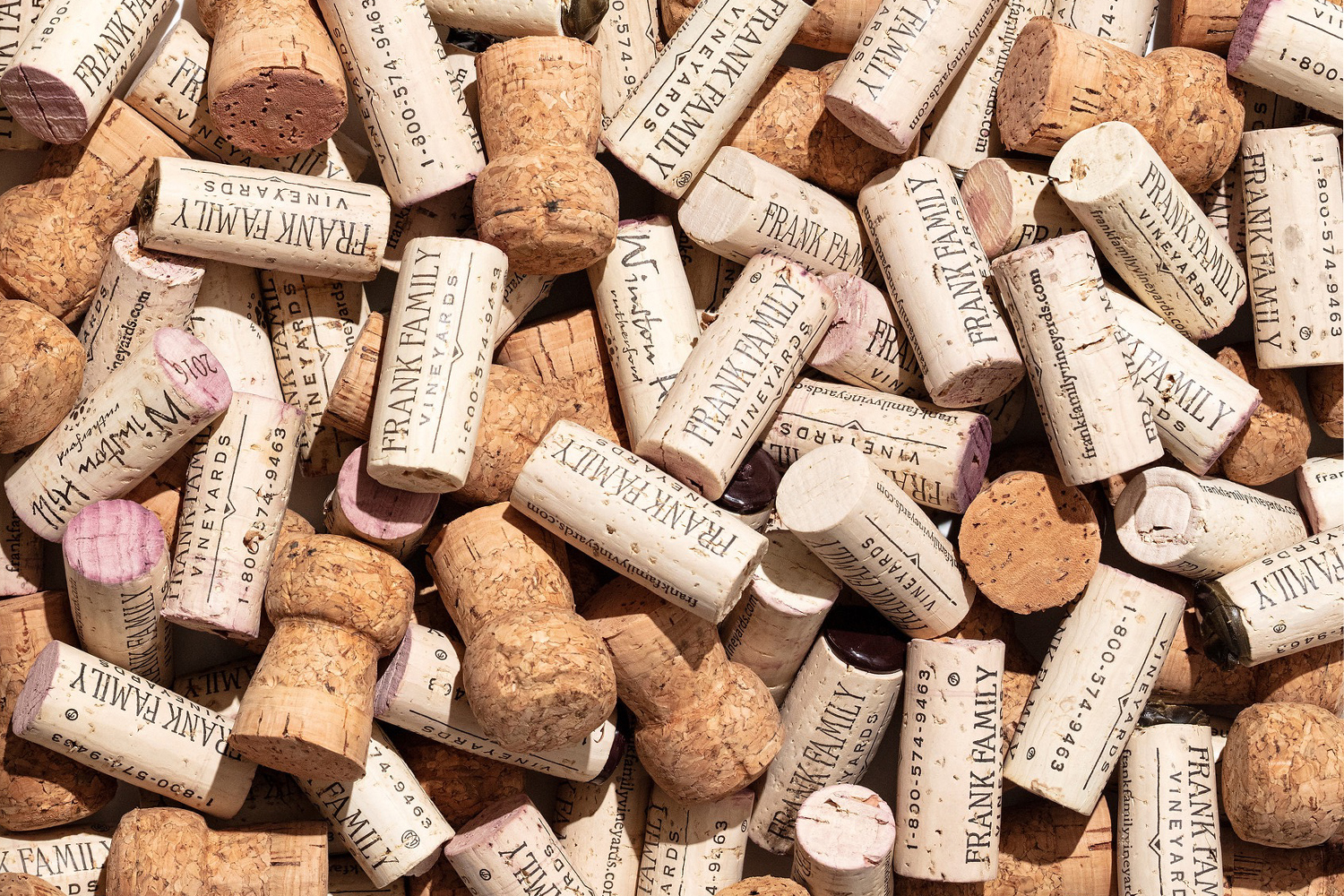Cork. It’s the first impression of quality and the last thing the wine touches. The nature and quality of a cork is of upmost importance to packaging, preservation of the wine, and the experience of opening the bottle. At Frank Family Vineyards, we value the connections we make with each person who opens a bottle of our wine and we want our hospitality to radiate, regardless of where you enjoy it. The finest details can make the difference and that is why we choose to use the finest natural cork for our bottles.
The Most Sustainable Option
Cork is one of the most sustainable resources on the planet. Often referred to as “the lungs of the environment,” the largest cork oak forest, located in Portugal, is so important to the ecosystem that it has been protected by law since the 13th century. At Frank Family, it’s important to us that our business partners put as much attention and care into their craft as we do, which is why we’re honored to work with two world class purveyors that were both founded in Portugal and have since expanded to California.
M.A. Silva USA, located over the mountain from our winery in Santa Rosa, California, sources cork from the Alentejo and Algarve regions of Southern Portugal where they never use pesticides or similar treatments in their forest maintenance practices. Our second supplier, Portocork, located in Napa, also sources from the Alentejo region of Portugal and from equally spectacular regions of Spain. Our winemaker, Todd Graff, prefers to work with both suppliers due to their top of the line service and quality in addition to their practice of supreme sustainability from harvest to the production of their corks.
The sustainability of the cork begins in the Montado, Portuguese for “cork oak forest”. These delicate and protected forests support a wide range of plant and animal life and play an important role in their surrounding communities. Much like how Napa Valley thrives on the annual grape harvest, those who live near the Montado build their lives around the cork harvest. Cork provides work, cultural heritage, and economic activity for more than 100,000 people in the seven Mediterranean cork-producing countries.

The Cork Harvest
The cork stopper that you find in your wine bottle is made from the bark of the tree. This means that the cork oak tree is not cut down in the harvesting process, it is only shaved. Bark is harvested from the tree every 9-12 years, with a cork tree living anywhere between 100-300 years. In its raw form, the cork is harvested by hand using a traditional tool called a “cork axe”. Both bark stripping methods minimalize environmental impact and improve the tree’s health. In fact, after the bark is harvested the cork bark regenerates itself and absorbs 3-5 times more CO2 than a tree that has not been harvested. The Montado, with about 5.4 million acres of surface area, contributes around 14 million tons of CO2 retention annually, playing a crucial role in fighting climate change.

Cork Production
The sustainability efforts do not end in the forest. After harvest, the large slabs of cork bark are processed in M.A. Silva’s Raw Material Center located in the heart of the Alentejo forest in Portugal. The state-of-the-art facility, which our winemaker Todd Graff and assistant winemaker Corey Garner have had the privilege of visiting, is strategically located close to where the cork oak grows in order to minimalize logistical impact and carbon footprint during transportation. Both M.A. Silva and Portocork put the raw material through rigorous testing in both their Portuguese and California facilities that ensures their cork is the highest quality and most consistent year after year. Our Frank Family winemaking team also performs our own sensory evaluations and quality control checks at each suppliers’ California laboratory prior to the cork being shipped to our winery.
Each producer has robust recycling programs. The production process uses recycled and filtered water to boil the cork during the sterilization process. Substances such as chlorine or alcohol are never used. The facilities are designed to reduce waste of water and energy. M.A. Silva’s U.S. facility is powered by solar, which helped the company to earn both the Sonoma Green Business Program and ClimateSmartTM certifications.

No Cork Left Behind
No part of the harvested cork wood goes to waste. Finished corks are recycled, sometimes into smaller corks and sometimes into other cork products. The bark and other cork that is deemed unsuitable for wine stoppers are used in the production of other cork products such as flooring and aerospace solutions. Cork dust can even be used to power the machines that are used in the cork production process.
Why Cork?
There are several choices when it comes to wine bottle closures. However, there is a reason why seven out of every ten wine bottles are closed with a cork stopper and why consumers and connoisseurs around the world consider the “pop” of the cork an integral part of their wine experience. When it comes to sustainability, quality and consumer preference, cork comes out on top. At Frank Family Vineyards we only use premium-grade natural corks that are meticulously curated for their technical quality, reliability and beauty – features that only the climate, farming and hand harvesting practices could create, just like the wine inside.











